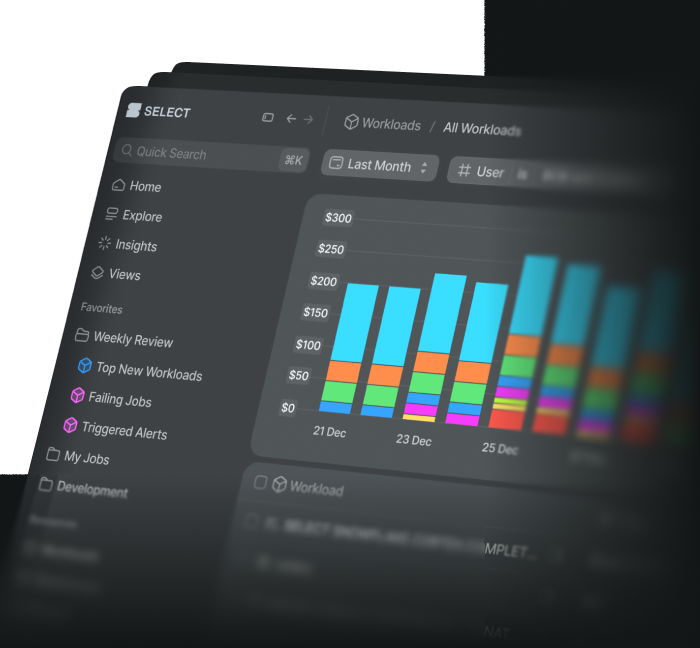
Sending Alerts to MS Teams from Snowflake
Jeff SkoldbergThursday, February 06, 2025
Snowflake has recently expanded alerting capability, allowing alerts to be sent via Email or Webhook. Webhook alerts are very powerful, because this enables the ability to send alerts to Slack or Microsoft Teams. This is useful for a variety of use cases including pipeline failure alerts and data driven alerts.
This post will provide a step-by-step guide to configure Snowflake alerts in Microsoft Teams.
Quickstart
Step 1: Create a Webhook in Teams
In Teams, create a new channel, or navigate to the channel where you want the alerts to land.
In the top right corner of the channel, click the 3 dots, then “Manage channel”
Go to the Settings tab, Connectors section, then click Edit.
You will be presented with a list of Connectors. Search for “Webhook”, then click “Add”.
On the next screen, you can upload an image for the webhook. I will use a nice Snowflake logo for the image. Be sure to name the webhook, then click “Create”.
After you click “Create”, it will give you the webhook URL. The URL contains your secret, so treat it carefully. For now, copy that URL and paste it to a notepad.
Test the Webhook
You can use this CURL command to test the webhook. If you’re on Windows, use Git Bash.
Immediately, you should see the “Hello, world” message come into your Teams channel.
Congrats, your new Webhook is now working!
Step 2: Create the Snowflake Secret
The Webhook URL contains a secret. Replace the secret string below with your secret string, the run this command in Snowflake.
Reminder: Secrets are schema level objects. Be careful about your worksheet database and schema context, or use fully qualified names.
In my case, I created a secret called gmds_teams_secret in the public schema of the analytics database.
To be clear, the secret is the last part of the URI show here: https://org-name.webhook.office.com/webhookb2/webhook-id/IncomingWebhook/this-is-the-secret
Step 3: Create a webhook notification integration
Now that we’ve successfully created the secret, let’s create the Notification Integration:
Step 4: Send the notification
To send a notification, we use the built-in SYSTEM$SEND_SNOWFLAKE_NOTIFICATION stored procedure. We must pass the SANITIZE_WEBHOOK_CONTENT function to the procedure to remove placeholder (i.e. SNOWFLAKE_WEBHOOK_SECRET from the message.
Here is the code I ran in my account:
The notification arrived in Microsoft Teams instantly!
Now that we have the basic gears in place, let’s move on to a real-world example.
Alerts Example: Send an alert when warehouse usage spikes
Craft a SQL query to identify warehouse usage spikes and wrap it in a serverless task
The following query compares recent usage (last completed hour), to the average hourly usage of each warehouse over the last month. In this case, we will flag warehouses with 50% increased usage.
We are using a serverless task because it will save us money! Just omit the warehouse name to make the task serverless.
For example purposes, I’m going to union a dummy record to ensure that every execution of the task produces a row and an alert.
SCHEDULE = 'USING CRON 2 * * * * America/New_York' means 2 minutes after every hour of every day.
Create a table to store the query results
Note this table has a few helper columns with default values not included in the query results:
- alert_id: primary key
- inserted_at: helps us know when the task inserted the record.
- alert_sent: initially false, will be set to true after the alert is sent.
Test the task, review the results
Create a procedure to send the alert if a spike exists
We want to do the following:
- Check the
usage_spike_alertstable for unsent records:alert_sent==false - If we have unsent records, send them to Microsoft Teams.
- Mark the record as sent.
- Output the number of alerts sent in the SQL console.
Manually test the procedure
We’ve already inserted a test row into the “spikes” table. Let’s run the sproc and ensure:
- The records are updated to
alert_sent==true - We receive the message in Microsoft Teams
You should have received an alert in Teams!
Formatting the alert can be a little tedious. I encourage you to play with the python code to send this alert in a prettier format and let us know how you did it!
Chain the task and the procedure together
We want the hourly schedule of the monitor_warehouse_spikes task to handle the end-to-end process; let’s make sure that after the monitor_warehouse_spikes task is run, the procedure that sends the alert is also run.
First, wrap the procedure in a serverless task and turn it on:
Next, chain the tasks together:
Test it:
This task should now add the new records to the table and send the alert(s) to Teams!
When calling send_usage_spike_alerts() procedure directly, the message appears in Microsoft Teams right away. When chaining send_usage_spike_alerts_task to monitor_warehouse_spikes task, it takes up to 3 minutes for the alert to come.
Wrap Up
Sending Snowflake alerts to Microsoft Teams is incredibly useful. The use cases for this type of alerting are endless!
This article has equipped you with the knowledge of:
- Creating a Webhook in Microsoft Teams.
- Creating Secret in Snowflake.
- Creating a Webhook Integration in Snowflake.
- Creating a task to log warehouse usage spikes.
- Creating a procedure to send alerts based on a condition. In this case the existence of rows in a query.
- Wrapping a procedure in a task.
- Chaining tasks together.
I’m looking forward to hearing about the use cases you come up with! 🥂

Jeff Skoldberg is a Sales Engineer at SELECT, helping customers get maximum value out of the SELECT app to reduce their Snowflake spend. Prior to joining SELECT, Jeff was a Data and Analytics Consultant with 15+ years experience in automating insights and using data to control business processes. From a technology standpoint, he specializes in Snowflake + dbt + Tableau. From a business topic standpoint, he has experience in Public Utility, Clinical Trials, Publishing, CPG, and Manufacturing.
Want to hear about our latest Snowflake learnings?Subscribe to get notified.
Get up and running in less than 15 minutes
Connect your Snowflake account and instantly understand your savings potential.


